As someone who’s used pretty much every type of kayak imaginable, I can tell you that picking the right option is very important.
After all, you’re not going to have much fun using a kayak designed for a completely different environment.
There are several factors you’ll need to consider when making your decision, including:
- Where you’ll be kayaking
- How serious are you about kayaking
- How you’re going to transport your kayak to the water
- Your budget
- What you plan to do with your kayak
- Features like the kayak’s length, width, and weight capacity
From personal experience, I can tell you that choosing the wrong kayak can be a real downer. It’s the difference between constantly regretting your decision and feeling like you’re getting the most out of your purchase.
Keep reading to find out exactly how to choose the perfect kayak based on your unique circumstances.
Where Will You Use Your Kayak?
The first thing you’ll need to consider is where you plan to use your kayak. If you’re not already aware, kayaks are specifically designed for either rivers or oceans. There are also general, all-purpose kayaks that can serve many functions.
Lakes

If you plan to use your kayak predominantly at a nearby lake, you can probably get away with using a recreational variant. Since you often deal with calm, flat water on a lake, there’s no real need to spend excessive amounts of money on features designed specifically for oceans or rivers.
Lakes are typically quite small, so there’s also no need to choose touring kayaks with enough storage for a multi-day trip. That being said, whitewater kayaks and sea kayaks can work in lakes without much issue.
Oceans
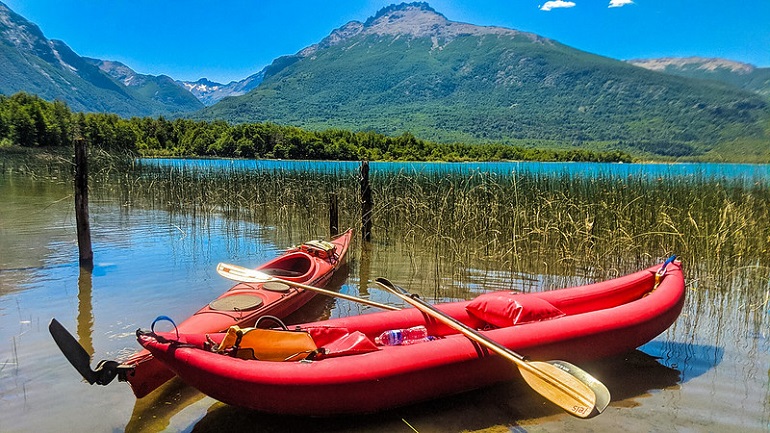
Ocean kayaks are highly specialized, and they are designed specifically for the demands of the ocean. Not only can they handle serious waves, but these touring kayaks also have enough storage space for multi-day excursions.
You can use ocean kayaks as you stick close to the coastline for day trips or set out into the horizon and go island-hopping.
Some of my best kayak experiences involved paddling between the Broken and Hand Islands here in British Columbia – and I definitely recommend multi-day trips if you’re getting into kayaking for the first time.
Rivers

A fast-moving river requires a unique approach when it comes to kayaking, and that’s why river kayaks are specifically designed for this purpose. These bad boys are smaller, more maneuverable, and easy to roll if you find yourself upside down.
River kayaks are like the “Porsches” of the kayak world. Small, compact, and built for speed. At the same time, they have minimal kayak storage. You definitely wouldn’t take a sea variant down a rapid, just like you wouldn’t drive a minivan on a race track.
One of my best river kayak memories is flying through the air after falling down a waterfall in Strathcona, BC. Fully vertical, I went straight into the water like a submarine before surfacing again on the other side – a real rush.
Kayak Categories

Aside from the distinction between recreational, sea, and river kayaks, there are a few other factors to keep in mind. For example, you can choose either “sit-in kayaks” or “sit-on-top” kayaks or go for folding kayaks, tandem kayaks, pedal kayaks, etc.
Here are some main kayak categories to keep in mind:
Sit-on-Top Kayaks
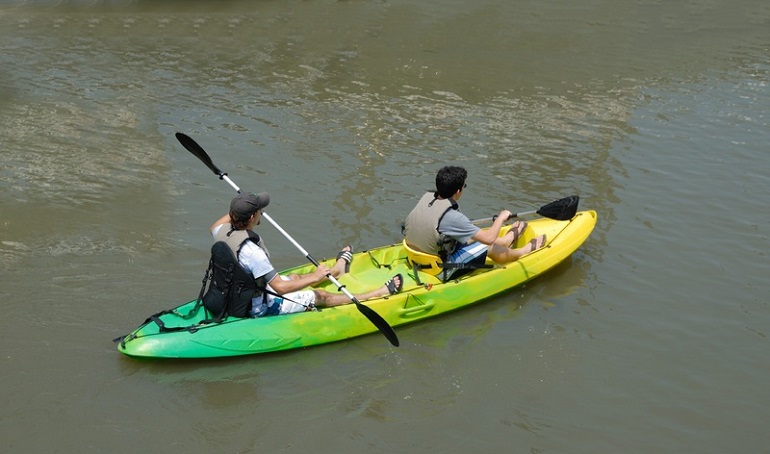
Sit-on-top kayaks are largely recreational, perfect for recreational paddling if you just want to get out on the water for a few hours at a time. As the name suggests, these kayaks have you sitting right on top of the surface instead of in a concave compartment within the hull. That’s not to say they don’t have a “seat,” as they usually offer some kind of back support with a fabric or plastic panel. Sit-on-top kayaks also have scupper holes that allow water drainage.
Sit-Inside Kayaks
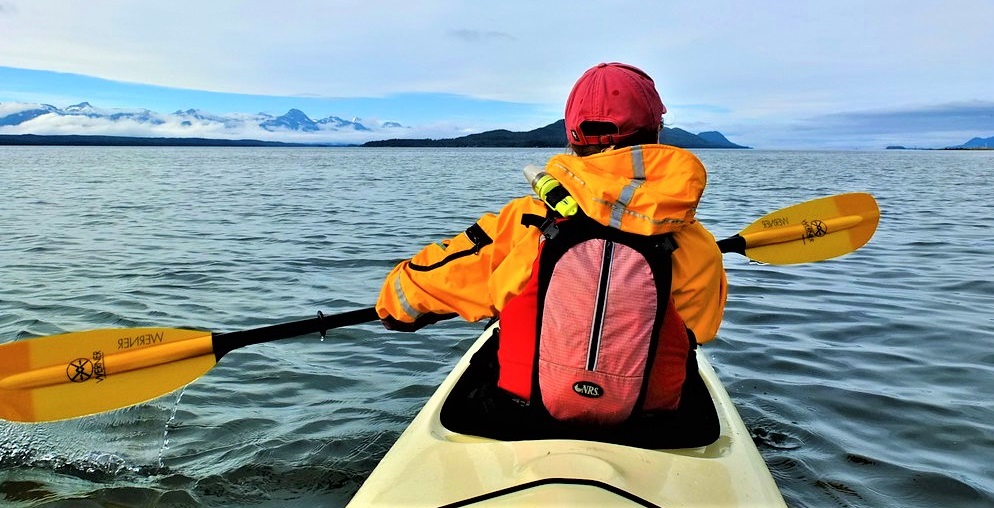
For serious kayaking, your best bet is to choose a sit-in kayak. These options have hollowed-out sections built for you to sit in. You can get right inside the kayak, laying your feet flat inside the hull.A Sit-in kayak system is essential for some types of kayaking, as the inner seating compartment protects you from getting wet or hitting your body on rocks as you move down rivers at high speeds.For sea kayaking in colder weather, sit-in kayaks can be combined with a spray skirt to keep you dry and relatively warm for hours on end. Some recreational options also offer sit-in systems. Note that only certain kayaks work with a spray skirt.
SUP-Yaks
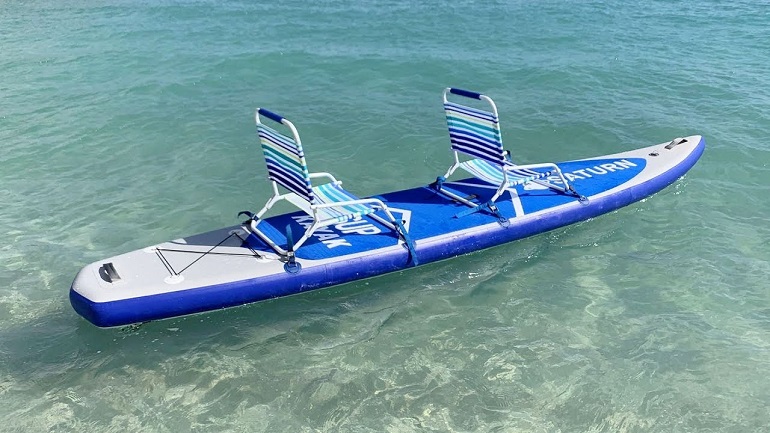
There is also a third type of kayak called a “SUP-yak.” Technically, this isn’t really a kayak at all – but rather a hybrid of both a paddleboard and a kayak. You can use your sup-yak for either activity. This provides decent versatility – especially for casual users who don’t plan to head down high-speed rivers or if you’re looking for day-touring kayaks. This is also a type of sit-on-top kayak.
Recreational Kayaks – Great for Casual Use
So when might you want a recreational version of a kayak?
At the end of the day, this option is perfect for casual users who plan on taking their kayaks out for a few hours at a time. They’re also pretty affordable, making them a good choice for saving a little cash or purchasing several kayaks for the entire family.
Recreational options also give you solid versatility, as you can use them on small lakes, coastlines, and perhaps very slow-moving and deep water. They have a large cockpit, a relatively short length, and a wide beam.
However, you’ll start to encounter limitations in a few specific areas:
- Rough waters
- Fast rapids
- Multi-day, long-distance trips
If you plan to tackle any of the above situations, you might be better off choosing a more expensive, specialized kayak instead.
Inflatable Kayaks – Ideal for Small Cars
We haven’t touched on inflatable kayaks just yet, but it’s definitely an interesting option if you’re looking for your first kayak.
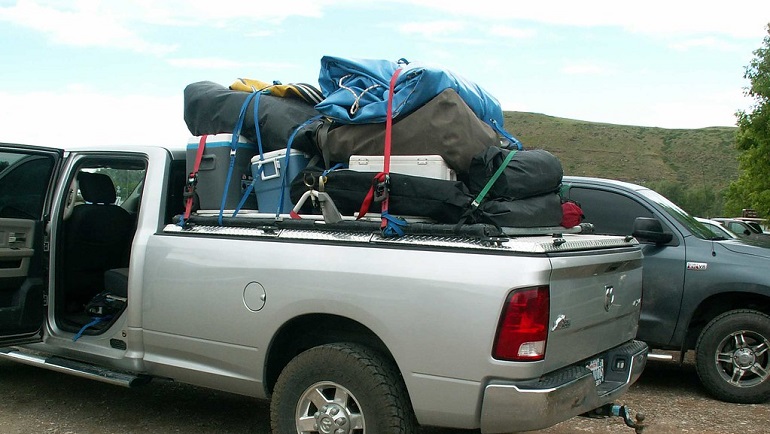
To me, the main benefit of inflatable or folding kayaks is simple:
Portability.
You can take your inflatable kayak pretty much anywhere – even if you have a very small car with almost zero trunk space. As the name suggests, these kayaks deflate right down, allowing you to pack them away in tiny spaces.
This serves two main functions:
First of all, you can take your inflatable kayak to the beach, lake, or river without buying a kayak rack or a trailer for your car, like for a hard-shell kayak. Tying your kayak to your car top roof rack is always a little sketchy. Unless you have a pickup truck or a similar vehicle with more storage space, the process of transporting a sea or river kayak can be downright stressful.
Secondly, inflatable kayaks make storage a breeze during the off-season. Here in British Columbia, we see months upon months of rain – definitely not ideal for kayaking.
Finding a place to store your kayak during these colder, wetter months can be challenging – especially if you live in an apartment. But with an inflatable folding kayak, pretty much everyone has enough space to tuck it away out of sight.
It’s an ideal day touring kayak.
Touring Kayaks – For Serious Adventurers
If you’re planning a multi-day trip in your kayak, you’re going to need a touring kayak. You should also need to know how to kayak properly in a lake, river, or in the ocean.
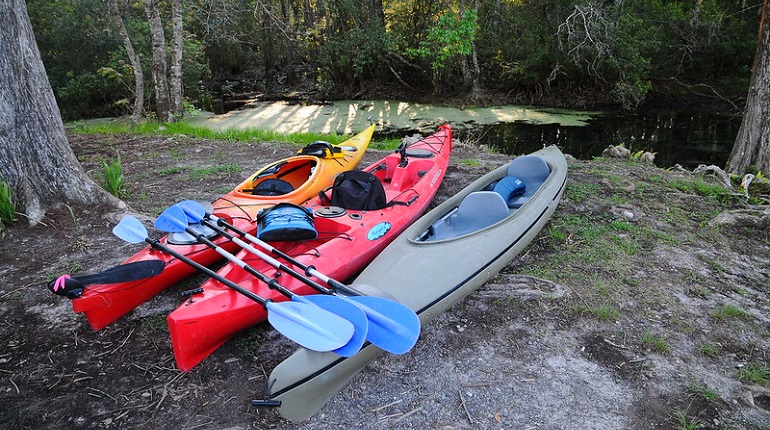
These kayaks are ideal because they give you plenty of storage.
You can pack away your tent, food, and plenty of camping equipment in several clever compartments. As a result, it’s possible to paddle out into the wild for weeks on end without returning to civilization – especially if you fish along the way.
The only downside is that because touring kayaks are built for serious excursions, the price can be much higher.
That being said, sea kayaking is by far my favorite type of kayaking, and I recommend it despite the price barrier of buying your own sea variant.
Fishing Kayaks – Perfect for Fishing
If your sole reason for buying your own kayak is to go fishing, you might want to consider a “Cool fishing kayak.”
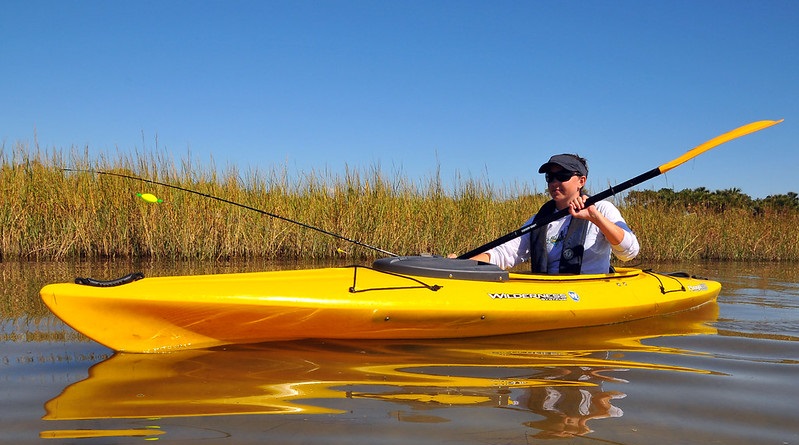
Yes, there are kayaks out there that are specifically designed for fishing. Admittedly, these are very similar to recreational options with a sit-on-top kayak design.
However, there are some key differences:
- Fishing kayaks are usually wider than normal recreational versions, giving you more room for your fishing needs
- They have special features designed for fishing needs
Fishing from a kayak gives you plenty of benefits:
- You don’t need to spend a ton of money on a motorized boat
- The lack of a motor doesn’t scare away the fish
- The design allows you to access shallower water
Many fishing versions have swivel-rod holders that provide additional functionality. You also have the freedom to stand up in your fishing kayak if need be. They have flat hulls that may lack speed but offer great primary stability.
One thing I should point out is that you can fish from virtually any kayak, even though fishing variants offer more specialized features.
I remember fishing during a trip to the Broken Islands. All I needed to do was tow the line behind my kayak, and I usually caught something by the end of the day.
Kayak Materials, Weight, and Price
A sea version of a kayak is usually made from either polyethylene, ABS-plastic, carbon fiber-glass, or a special type of Kevlar. These kayaks are also quite heavy, weighing an average of about 50-60 pounds. Finally, kayaks for the sea can be quite expensive, ranging from about $1,500 to $5,000.
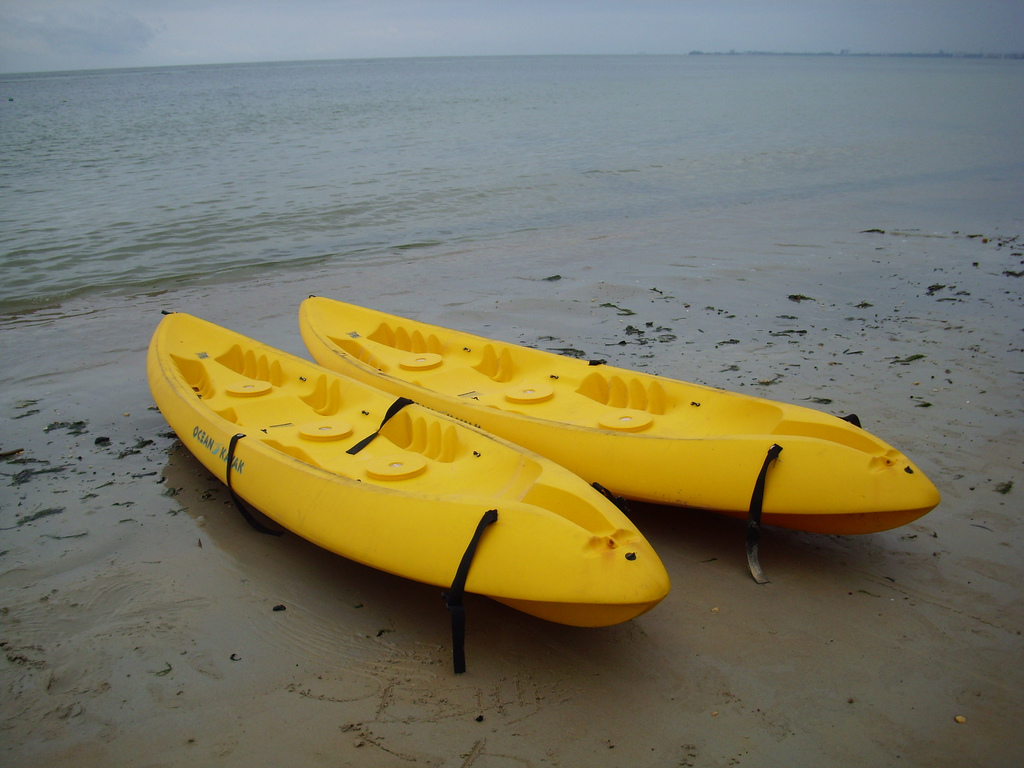
River kayaks are made from the same basic materials as sea variants but are much shorter. Almost no one takes fiberglass boats in whitewater rapids. So even though these kayaks are shorter than sea variants, they’re a little wider.
They’re also quite durable – making them heavier than you might expect. Finally, on average, river kayaks are cheaper than sea kayaks, and you can get your hands on an extremely high-quality product for about $1,500.
Recreational kayaks allow you to save money, so expect cheaper hull-type lightweight materials like polyethylene plastic. Because of this, a recreational variant can cost only a few hundred dollars. Expect a lighter product with a weight of about 35 pounds.
Kayak Length and Width
Before purchasing a kayak, you also need to keep in mind the dimensions of the kayak, like its length and width.

Sea kayak
- Length: 12-17 feet
- Width: 28-36 inches
River Kayak
- Length: 7-9 feet
- Width: 18-24 inches
Recreational kayak
- Length: ~10 feet
- Width: 26-30 inches
Moving Forward With Your New Kayak
Now you have all the information you need to buy your new kayak.
Choose the right kayak, and you could be enjoying one of the most exhilarating aquatic sports.
Whether you’re on a budget or ready to invest in a seriously advanced kayak, there are options for everyone.
Take it from me:
Kayaking is one experience you don’t want to miss!
0 Comments